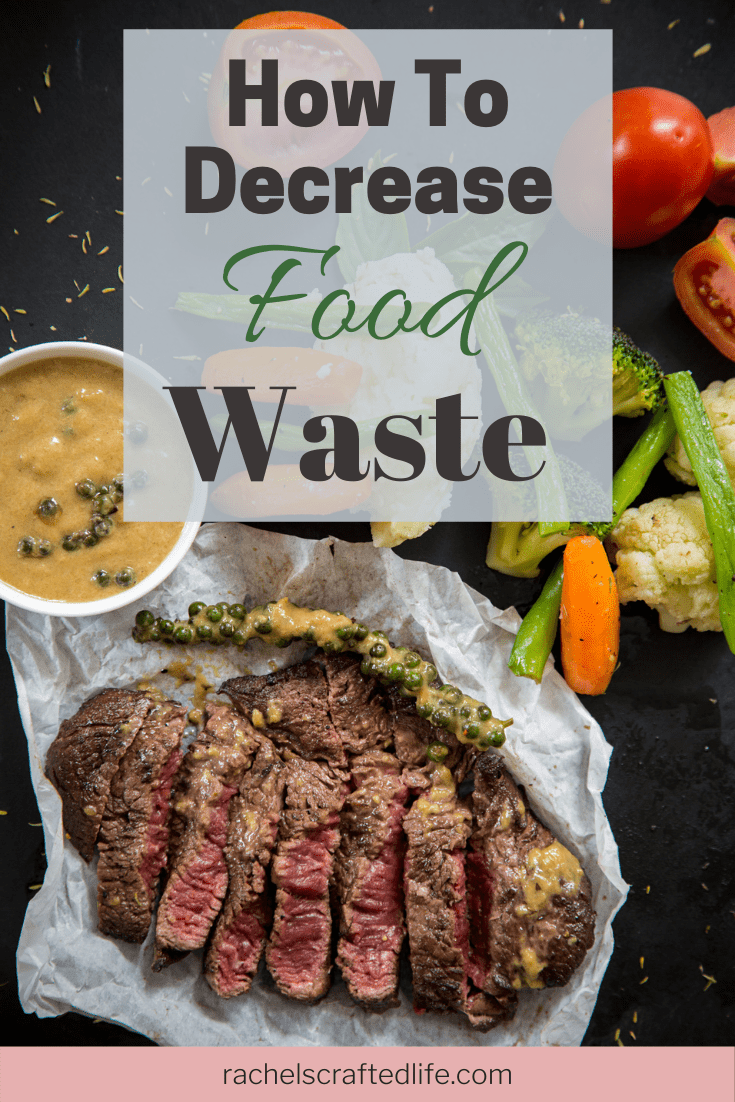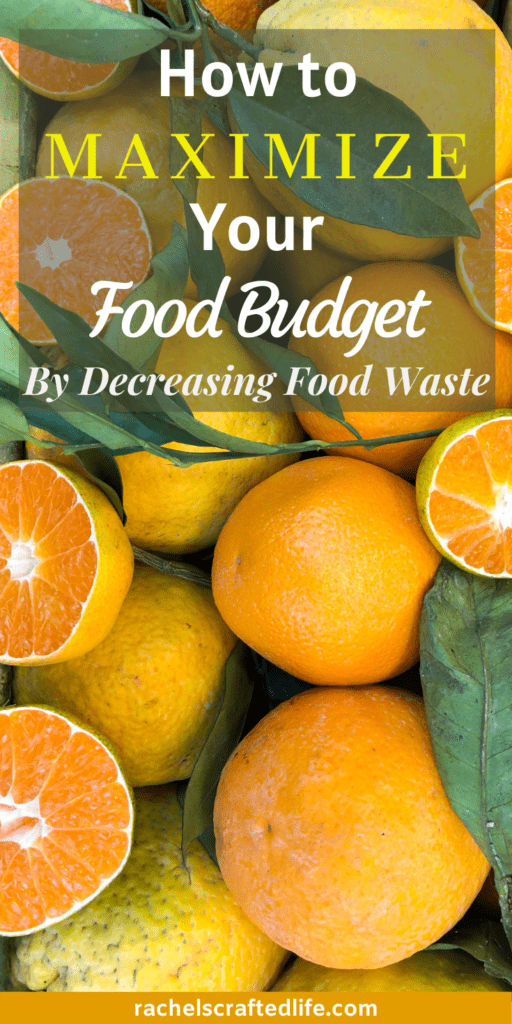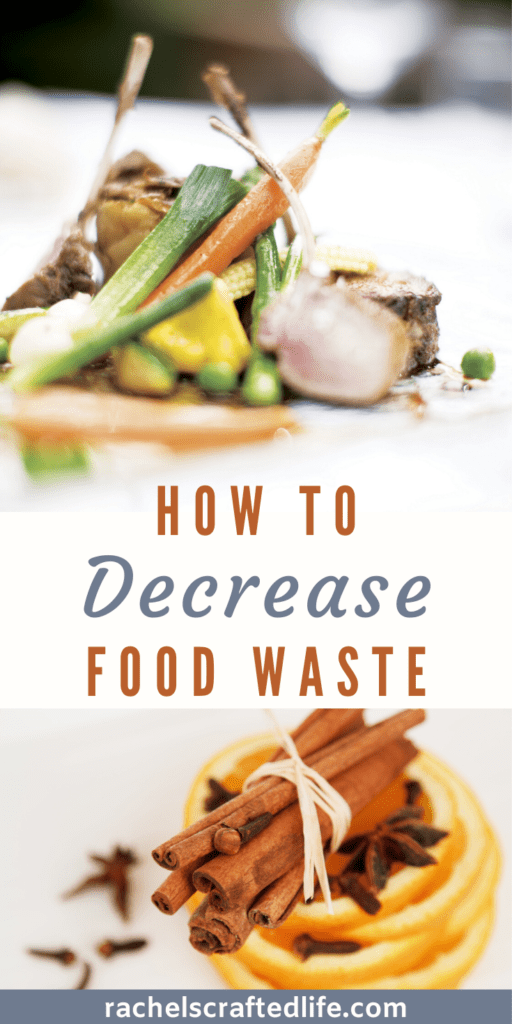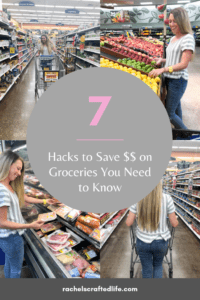A great way to save money is to stretch what you can afford to the max without letting anything go to waste. Our grocery bill is our second largest expense after housing. So trying to decrease food waste and making the most of the food we do buy is important to stretching our budget.
This is post two in the waste free lifestyle series. The first post was an overview of ways to decrease waste in the home so be sure to check that out too if you missed it.
On average an American family of 4 wastes $1,600 worth of food every year. And on a global scale almost half of the world crops end up in landfills and industrial countries are the leading culprits. For more statistics and causes of food waste head over to Green and Growing. Now let’s learn how to be part of the solution and save money.
This post may contain some affiliate links. This means I make a small profit from your purchase but at no increased cost to you. Thank you!
Understand a Best by, Sell by and Use by Date
Sell by date is for store use only. You can ignore this.
Best by dates are a guideline for when food is at its best. It is not completely accurate and most food is fine to eat even if it is a little past its peak.
Use by date is also a guideline on when food will reach its peak. It is the most useful metric for consumers and should be taken into consideration but it is not the end all be all.
However the best way to be absolutely sure about food without wasting it is to use your own senses. Particularly smell and taste, if food seems off to you when you smell it or taste it, then don’t risk it. Just because a food is past its “peak” doesn’t mean it is bad yet. Use your best judgments to see when food has actually gone bad.
Keep Fridge + Pantry Organized
The first and probably most important step in decreasing food waste is to know what you have on hand and when it will go bad. This will allow you to plan meals around foods that need to be used up first.
Keeping your fridge and pantry organized and having a system for rotating through foods will allow you to readily see what you have on hand and what you need to actually buy. You’ll also better be able to see what to see food that’s about to go bad.
Before going grocery shopping take inventory of your fridge and pantry. This will prevent you from buying doubles of items that you already have and can’t use up before they go bad. It will also allow you to plan meals around what you have rather than going out and buying ALL the ingredients for every meal that week.
Shop Smart
The first important step to shopping actually happens right before shopping: the plan. Planning out your meals around what you have and what is on sale that week. Make sure you set a realistic timeline to eat all the food you buy before it goes bad. I know we all want to think we will eat extra healthy and buy the extra veggies. Just make sure you can realistically eat them all and they don’t end up in the trash.
Remember to account for times that you’ll eat out in a week and eating frozen meals on busy nights.
I love shopping in bulk because it often offers extra savings however those savings go down the drain if what you bought goes bad before you get to it. So definitely shop in bulk if it saves well, you can freeze for later, or you can use it all. Otherwise you’ll actually save money by just buying what you need and will use even if it costs slightly more per item.
Shopping local is a great way to have food last longer because it didn’t have to be transported as far. It also supports local communities and you can get great deals on produce especially at farmers markets.
More Tips to Save on Grocery Shopping: Easy Hacks to Save Money on Groceries
Storing Food Properly
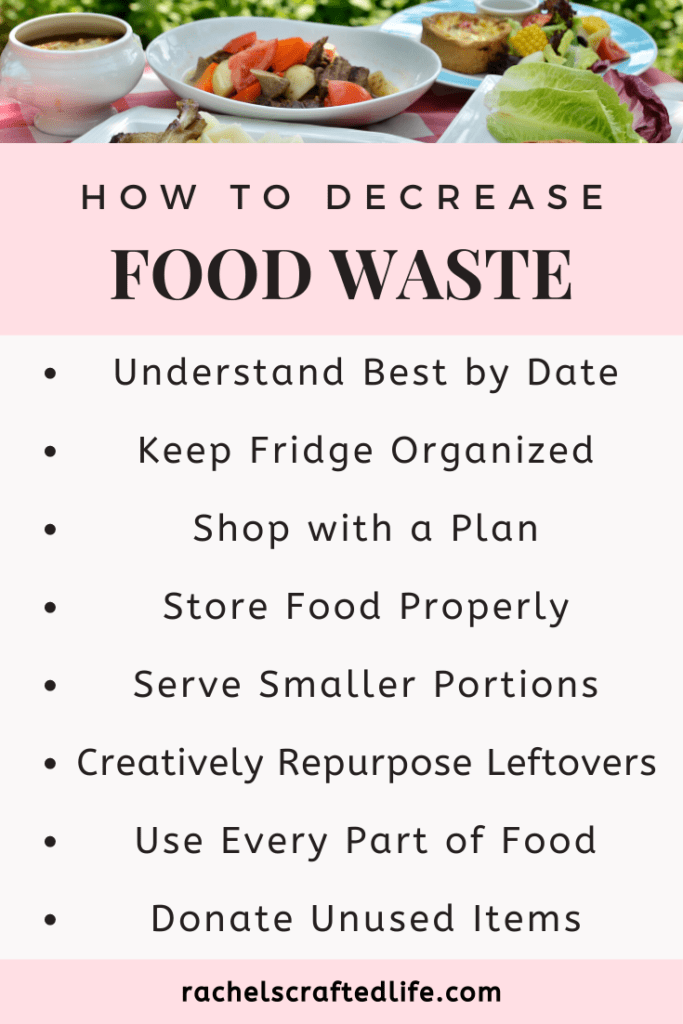
Storing food properly can decrease food waste by prolonging the life of food. Here are a few tips I know and love but if you’re ever unsure a quick online search will show you the best way to store each item.
- Moisture is the enemy because it invites mold. A paper towel in with lettuce, spinach and berries will absorb the extra moisture.
- Store herb bunches, crunchy veggies (carrots, asparagus) and green onions in water to last longer.
- Food prep, especially when busy, cuts down on expensive pre-packaged items and you’re more likely to eat them faster.
- Break bananas apart to last twice as long
- Bread and biscuits in an airtight container or bag will keep them from going stale.
Eating
When you are first dishing up your food watch the portion size. Don’t take too much because it’s always ok to go back for seconds. This way you don’t take more than you can eat and have to throw it away.
The same goes when serving kids who often don’t finish their plates. Serve “too little” on purpose and know if you or they are still hungry then everyone can have seconds.
Related Posts:
Creatively Repurpose Leftovers
Whether you eat at home or eat out for a meal, always save your leftovers. That food can be used in so many different ways. I have no problem eating leftovers so my favorite way to use leftovers is as future lunches and dinners. Then I don’t have to cook for every meal which saves so much time.
If you don’t like eating leftovers then find new ways to use old leftovers. A quick internet search can inspire lots of new ways to repurpose leftovers. Potato skins into chips, bread into croutons or bread crumbs, mashed potatoes into shepherds pie. There are so many options.
Use Every Part of food
Another great way to stretch your food is to use every part of it.
Have you heard the story: A girl was baking a turkey for thanksgiving and she cut off the front and back of the turkey. When asked why she said ‘I don’t know, it is how my mother cooked hers.’ When the mother was asked why she did it she said it was because her pan wasn’t big enough for the whole turkey.
Sometimes we don’t use parts of food because we were never taught how to use them. Food items that we consider scraps can often be used in new and different ways to make delicious food. We just have to learn about them.
Here are a few examples I found:
- Make a stock from chicken bones or vegetables.
- Omelets are great for using leftover odds and end vegetables.
- Repurposed food scraps such as pickled veggies, roasted pumpkin seeds, or turning broccoli stems in a slaw.
- Use the freezer: Greens or fruits going soft? Chop them up and freeze for a smoothie. Over ripe bananas are great for baking. Freeze leftovers for a later meal. Leftover fresh herbs frozen in oil to be cooked with later.
- Feed leftover fruits and vegetables to your dog. Make sure you check to make sure you know what is safe for dogs and what isn’t first. Other animals like chickens also enjoy certain food scraps.
- Regrow certain foods from their stumps. Foods like celery and green onions just need water and sunlight.
- Potpourri can be made from fragrant scraps like orange peels. They will make your house smell amazing!
- Lastly, compost can decrease your food waste. It can create nutrient rich soil perfect for growing more food if you ever wanted too.
Donate
If there is any food you’ve bought, maybe something for a new recipe you didn’t like, and you’re never going to use it then donate it. Give it to a food drive or a center that feeds the needy.
Before a vacation I always go through our fridge and round up any food that will go bad while we’re gone and I give it away. Sometimes to a neighbor, or a family member. Sometimes it is a friend that is helping us out.
Decrease Food Waste
There you go, there are so many ways to decrease food waste and they are all simple to implement. It will just take a little practice and maybe learning a new skill or two.
It can save you so much money, I read once that one in five bags of food we buy goes to waste. Imagine stretching your food and saving that money each month. Head to the thrifty category of RCL to learn more ways you can stretch every dollar to live the life you want.


